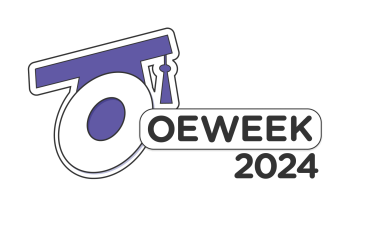Nicolai van der Woert
- onderwijskundige met specialisatie op digitaal leren en innoveren -… Meer over Nicolai van der Woert
A lot of Open Educational Resources are out there, but hidden in a jungle of repositories, lists and other online locator sites which are hard to find and sometimes even harder to use. Often the quality of these materials is unclear. These facts are complicating reuse. Most teachers and students don’t even start, if they are aware at all.
At Radboud university medical center, a content curation study was commissioned (de Vegt, Zielhuis, Creugers, van der Woert, 2019) for Biomedical sciences (in 2015) Medicine (in 2016) and Dentistry (in 2018). The research consisted of seeking and finding, assessing, unlocking, adding value to, and re-using educational materials.
These were the main questions to be answered:
The research was conducted with the assistance of 3rd, 4th, and 5th-year students. The most important findings are summarized below. Surprisingly, the students provided a lot of unexpected feedback about their perspective on re-using OERs. A perspective that was quite different from the teachers’ way of looking at things.
Are there even sufficient high quality materials?
There appear to be (too) many repositories, lists, and other locator sites for Open Educational Resources (OER); however, the quality and user friendliness vary widely. It is a labyrinth in which the average lecturer or student soon gets lost. For the research, the students searched all locator sites systematically. Sources were assessed based on a number of ‘formal’ criteria: correctness of the content, curriculum relevance, didactic appeal, cultural translatability, up-to-date, English language.
However, the most important question is a more informal one: ‘would you want to use this as a student?’
For all formal criteria, the students were very critical and strict. There was not much they judged as a sufficient ‘formal’ quality. On top of that many resources were rejected because the usability and feasibility for students was insufficient.
For Biomedical sciences, 1290 sources were researched, of which 6.5% satisfied the criteria. For Medicine it was 14,500 sources at 18.5%, and for Dentistry it was 600 sources at 32%. The rejected OERs were “just noise” and you don’t want to bother your lecturers and students with those. By providing a quality-checked collection for each part of the curriculum, you can find a useable result more quickly. Yet it was still hard to find lecturers who want to work with a curated sub-collection. They have many follow up questions regarding the formal issues of correctness and quality, and the teacher’s autonomy is challenged: the “not made here” syndrome is surfacing fast. And as soon as a resource is not a 100% match and it needs to be redesigned or changed to be fit for reuse, most taechers’ enthousiasm dropped dramatically. Adoption of curated OERs by lecturers is still an issue to be addressed in more depth. .
Students, however, can’t wait to get started. The curated collection is like a candy store for them. They even asked the question why is quite common to recommend literature, but not recommend OERs..
What does “quality” mean when describing open educational materials?
Quality is a flexible concept. During the research it was noted that lecturers often employ different criteria for suitability than students. Where lecturers focus on more formal criteria like quality, whether it is up-to-date, content accuracy, and ethical correctness, the selection focus for students lies on the usability and feasibility of study. Students need to see a clear benefit in the use of open educational materials; if you don’t understand the lecture fully, you want a YouTube video or other bite-size chunck to explain it to you in a different way that night.
Several disciplines already use quality labels. However, these are often so strict that not a lot is left over, even though materials can often be made suitable for use by small modifications and enhancement. The peer review also costs a lot of time and money. Not to mention that the student’s usability and feasibility perspective is soon lost from view when only teachers are assessing quality.
What do you need to do to make open (online) educational materials suitable for re-use?
Successful re-use depends on several factors:
The above findings are not really surprising, but mainly applicable for teachers. On top of that the students came up with what they needed. This includes these points:
Reference
de Vegt, F., Zielhuis, G., Creugers, N., van der Woert, N. (2019) Reuse of open educational materials, an assessment for biomedical sciences, medical sciences and dentistry. Dutch association for medical education.
- onderwijskundige met specialisatie op digitaal leren en innoveren -… Meer over Nicolai van der Woert
Dit artikel heeft 1 reactie
Als lid van SURF Communities kun je in gesprek gaan met andere leden. Deel jouw eigen ervaringen, vertel iets vanuit je vakgebied of stel vragen.
Erg boeiend artikel. Met inderdaad geen onverwachte, doch wel zinvolle bevindingen.
Wat zou nu dè manier zijn om tot een gecureerde verzameling per vakgebied te komen, die gestructureerd is rond de curricula van sommige/alle Nederlandse/internationale opleidingen/vakgebieden???



1 Praat mee